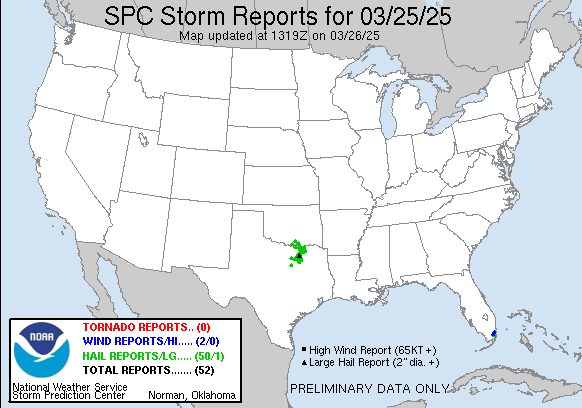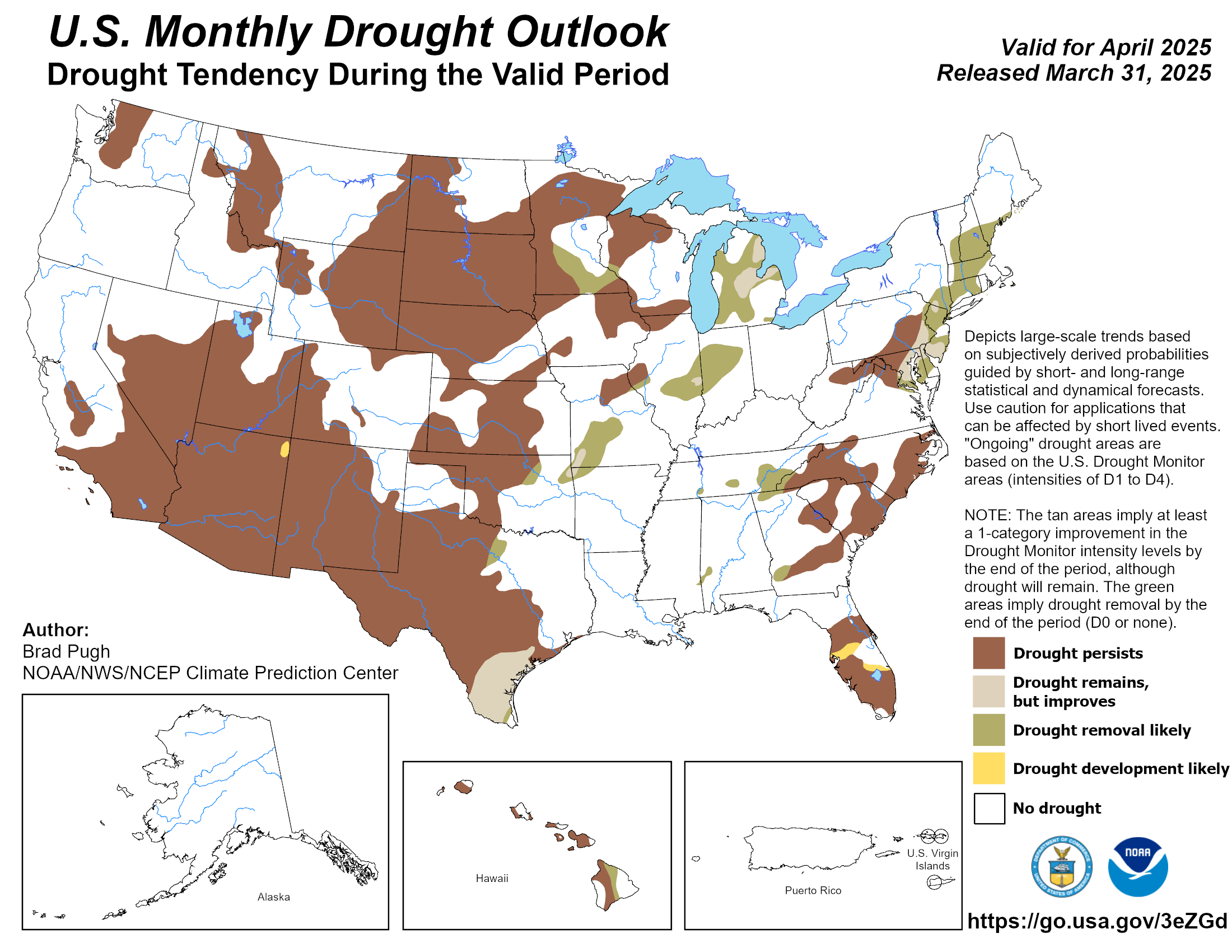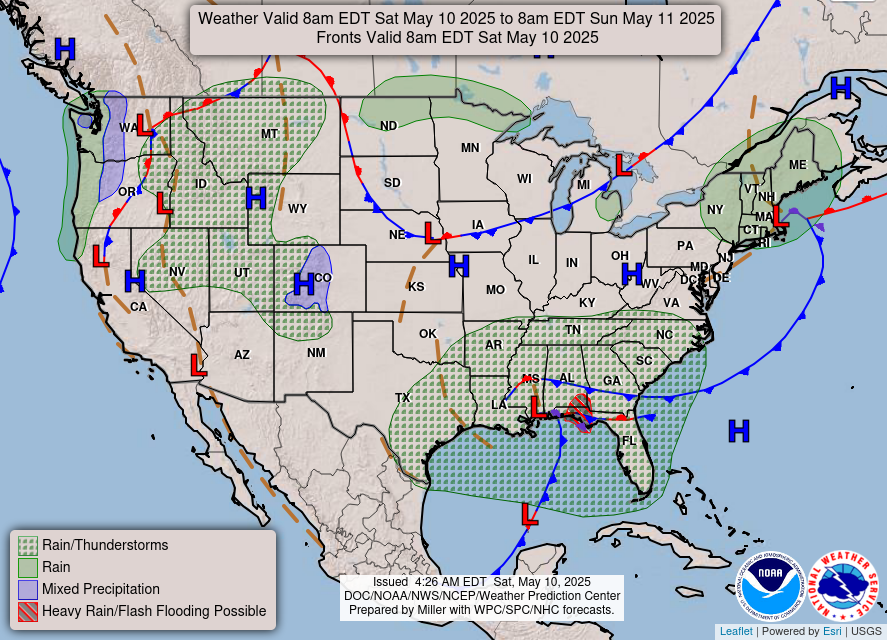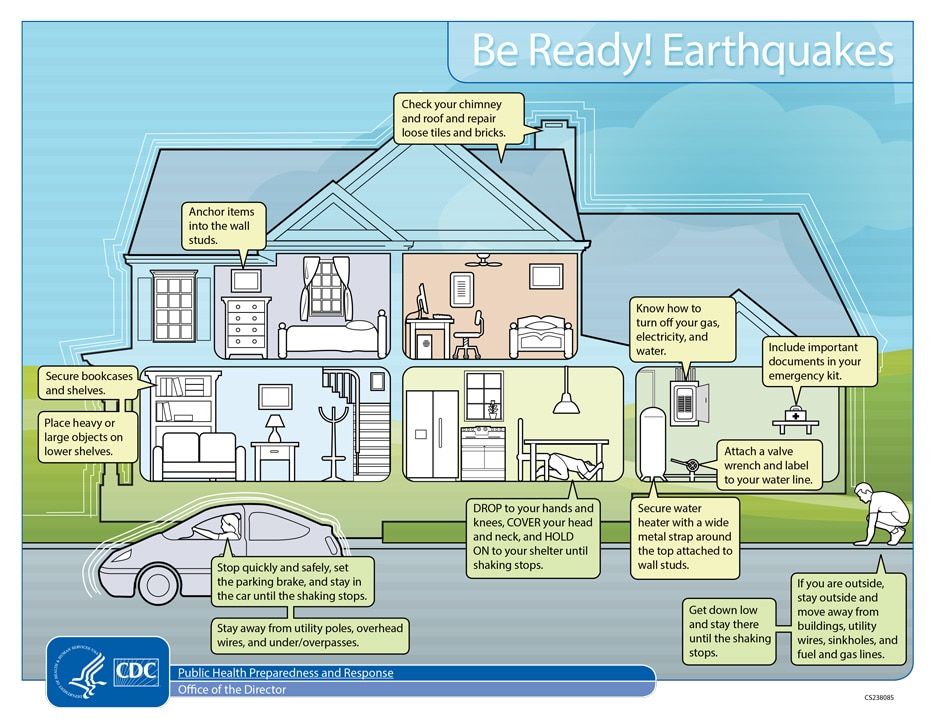Archive for December, 2019
“Climate change has been linked to changes in Atlantic hurricane behavior, making storms more destructive to the built environment and vital infrastructure, more harmful to the physical and mental health of island-based and coastal populations, and more deadly in their aftermath…”
Thursday, December 19th, 2019NEJM : https://www.nejm.org/doi/full/10.1056/NEJMp1912965
“Climate change has been linked to changes in Atlantic hurricane behavior, making storms more destructive to the built environment and vital infrastructure, more harmful to the physical and mental health of island-based and coastal populations, and more deadly in their aftermath.1 These escalating effects on population health represent a double environmental injustice: socioeconomically disadvantaged and marginalized populations sustain disproportionate harm and loss, with more hazardous storms exacerbating the inequity; and while the populations most vulnerable to Atlantic hurricanes, especially those in small-island states, contribute virtually nothing to climate change,2 they are among those most exposed to risks that are worsened by the carbon emissions from higher-income countries.2
Anthropogenic climate change amplifies storm hazards through such intermediaries as anomalously warm ocean and air temperatures, rising ocean heat content, and increasing atmospheric moisture capacity, compounded by a rise in sea levels. Atlantic hurricanes have become stronger, wetter, and slower-moving over the past few decades, with likely contributions from human actions….”
Climate change & wildfires
Tuesday, December 17th, 2019https://grist.org/justice/wildfires-are-getting-worse-and-so-is-the-deadly-smoke-they-bring-with-them/
Climate change is increasing the size, frequency, intensity and seasonality of wildfires. Climate scientists have already identified the telltale climate fingerprints on some of the biggest blazes of the past decade:
• Climate change has already increased the frequency of fire weather — hot, dry, and windy — in much of the U.S. (Abatzoglou, Williams, and Barbero 2018).
• Climate change has doubled the area burned in the Western United States (Abatzoglou and Williams 2016).
• The fire season has increased by more than two months in the Western United States, largely due to climate change (Westerling et al. 2006).
All fire needs to burn is an ignition source and plenty of fuel. While climate change might not ignite the fire, it is giving fires the chance to turn into catastrophic blazes by creating warmer temperatures, increasing the amount of fuel (dried vegetation) available, and reducing water availability by earlier snowmelt and higher evaporation. These infernos have dire consequences – from respiratory illness to loss of life and property, many communities are not equipped to deal with this new era of mega fires.
Deadly protests erupted across India Sunday over a controversial citizenship bill that critics fear could further marginalize the country’s minority Muslim community.
Tuesday, December 17th, 2019CNN: https://www.cnn.com/2019/12/15/india/india-protests-assam-delhi-citizenship-intl-hnk/index.html
The World’s Deadliest Animal: Aedes Albopictus Mosquito
Monday, December 16th, 2019The meager, long-legged insect that annoys, bites, and leaves you with an itchy welt is not just a nuisance―it’s one of the world’s most deadly animals. Spreading diseases such as malaria, dengue, West Nile, yellow fever, Zika, chikungunya, and lymphatic filariasis, the mosquito kills more people than any other creature in the world.
In 2018, the number of severe cases of West Nile virus was nearly 25% higher in the Continental U.S. than the average incidence from 2008 to 2017.
In the past 30 years, the worldwide incidence of dengue has risen 30-fold. Forty percent of the world’s population, about 3 billion people, live in areas with a risk of dengue. Dengue is often a leading cause of illness in areas of risk.
Lymphatic filariasis (LF), a parasitic disease transmitted through repeated mosquito bites over a period of months, affects more than 120 million people in 72 countries
In 2017, 435,000 people died from malaria and millions become ill each year including about 2,000 returning travelers in the United States. Nearly half of the world’s population is at risk of this preventable disease.
You can protect yourself from these diseases by avoiding bites from infected mosquitoes.
CDC is committed to providing scientific leadership in fighting these diseases, at home and around the world. From its origins, CDC played a critical role in eliminating malaria from the U.S.
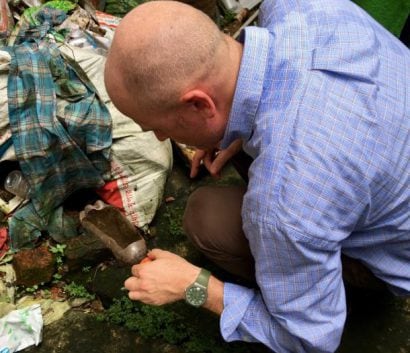
CDC Entomologist, Seth Irish, examines a discarded water bottle for the presence of mosquito larvae, during a training exercise in Dhaka, Bangladesh
Since 2001, global health action has cut the number of malaria deaths in half―saving almost 7 million lives. CDC co-implements the President’s Malaria Initiative in 24 countries and leads Malaria Zero efforts to eliminate malaria from Haiti and efforts to eliminate lymphatic filariasis from Haiti and America Samoa. Haiti is an example of how Mass Drug Administration can reduce spread of LF.
Today, CDC works to eliminate the global burden of malaria and other mosquito-borne diseases. From conducting research to developing tools and approaches to better prevent, detect, and control mosquito-borne diseases, to mitigating drug and insecticide resistance, to accelerating progress towards disease elimination, CDC scientists are working around the world to protect people from mosquito-borne diseases.
Untreated chronic conditions can quickly become life-threatening in a refugee camp
Monday, December 16th, 2019CDC:
How Kerala Avoided a Chronic Disease Crisis
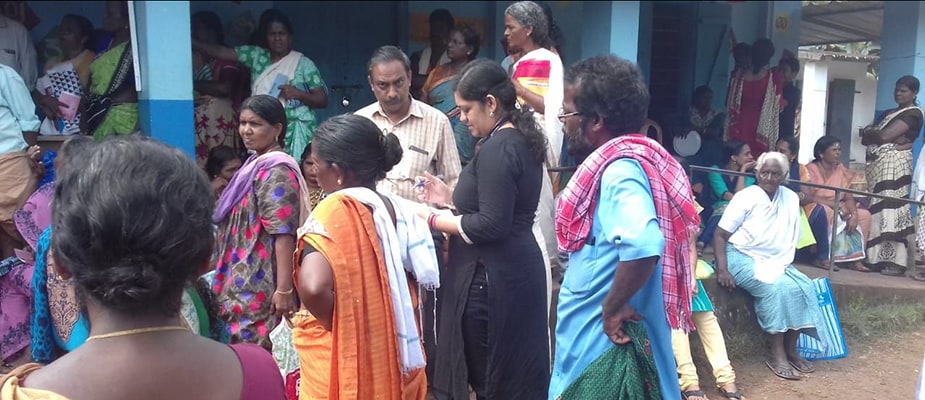
A field epidemiology resident connects with care providers and patients at a flood relief camp in Kumarakom, Kerala. Photo: Renjith Krishna
A river of mud and debris surged through the streets of Kerala in August 2018. The southwestern Indian state was hit with unusually high rainfall during monsoon season, overflowing dams and causing devastating floods and landslides that affected hundreds of villages and destroyed thousands of miles of roads and homes.
Over one million residents were evacuated and many moved to relief camps. For those with chronic conditions like hypertension (high blood pressure) and diabetes, life in a relief camp without access to medication or medical records can be dangerous.
“During an emergency we often consider potential complications from communicable diseases, but untreated chronic conditions can quickly become life-threatening,” explains Dr. Ganeshkumar, a medical scientist with the Indian Council of Medical Research-National Institute of Epidemiology (NIE).
Nearly 1 in 3 people impacted by the flood were estimated to have diagnosed hypertension, but due to emergency conditions, nearly 90% of these flood victims were living with uncontrolled blood pressure. Left untreated, high blood pressure could become a “silent killer” causing heart disease, stroke, or kidney failure with little warning.
Springing into Action
Within days of the floods, Kerala’s state health department teamed up with NIE to develop an action plan to address noncommunicable disease (NCD) risk factors like uncontrolled hypertension in the flood region.
NIE established a multi-step approach to respond to the burgeoning crisis. The team prepared guidelines for the treatment of high-risk NCD conditions based on the latest research and global best practices, increased local NCD medication supplies, and coordinated referral systems for people requiring emergency medical care. They then established reporting protocols throughout the state so they could actively monitor the crisis.
“Streamlining NCD service delivery by integrating into primary care is challenging during emergencies due to the competing priorities and the scattered displacement of patients,” explains Dr. Bipin Gopal, State NCD Nodal Officer in Kerala. “High-level planning is essential to ensure commitment and allotment of resources, but collaboration with stakeholders in the field is absolutely critical for interventions to be successful.”
Ready in an Emergency
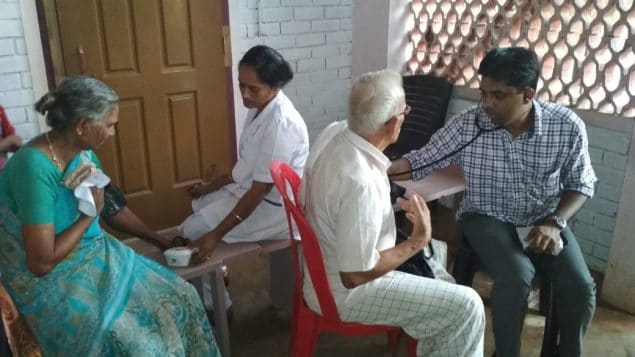
Local physicians screen for hypertension at a primary health center in Vanimal village in northern Kerala. Photo: Abishek S.
To help coordinate on-the-ground efforts, NIE deployed field epidemiology residents to the hardest hit districts in Kerala. Field epidemiologists, commonly referred to as disease detectives, are part of the global health workforce trained to guide the response to urgent public health problems by tracking, containing, and eliminating health threats.
Within a week after flooding began, the field epidemiology residents were collaborating with district medical officers and administrators to familiarize physicians in the relief camps and at primary care centers with the emergency treatment and referral guidelines. They provided support to increase public awareness about the danger of untreated NCDs and they trained health centers on the NCD emergency response monitoring system.
Chronic but Urgent
Since the 1980s, CDC has collaborated with countries to train a global workforce of field epidemiologists through the Field Epidemiology Training Program (FETP). FETP residents and graduates have responded to some of the world’s most urgent health events, including the Ebola virus outbreak in West Africa.
In 2018, CDC—in coordination with ministries of health, the World Health Organization, Resolve to Save Lives, and other global partners—launched an effort to strengthen NCD epidemiology within the training program, with a focus on cardiovascular disease and hypertension. Through intensive on-the-job training and mentorship, FETP NCD residents develop skills to quickly identify health risks, monitor health interventions, and use data to inform programs and policies.
Two of the epidemiologists who led the on-the-ground coordination in Kerala are part of the first FETP NCD cohort in India.
A Step Ahead
While Kerala is still recovering from the floods, health professionals in the region have provided over 100,000 NCD consultations. The quick action of NIE and the local field epidemiologist residents likely prevented scores of complications and deaths.
With chronic conditions requiring long-term care and sustained involvement from the health system, advocates of strengthening NCD prevention and control efforts have long asserted that health systems capable of addressing NCDs are more robust and better prepared to respond to all types of health threats.
All residents in India’s first FETP NCD cohort are now focusing on continuing to strengthen local health systems by supporting other districts on integrating hypertension and cardiovascular disease management into primary care.
“Field epidemiology training strengthens the national workforce and health system so that both can be responsive when an emergency occurs,” states Dr. Ganeshkumar. “We’ve seen that in action in Kerala.”
Ugandans knew they had to get ready for the worst when neighboring Democratic Republic of Congo (DRC) reported a new Ebola outbreak on August 1, 2018.
Monday, December 16th, 2019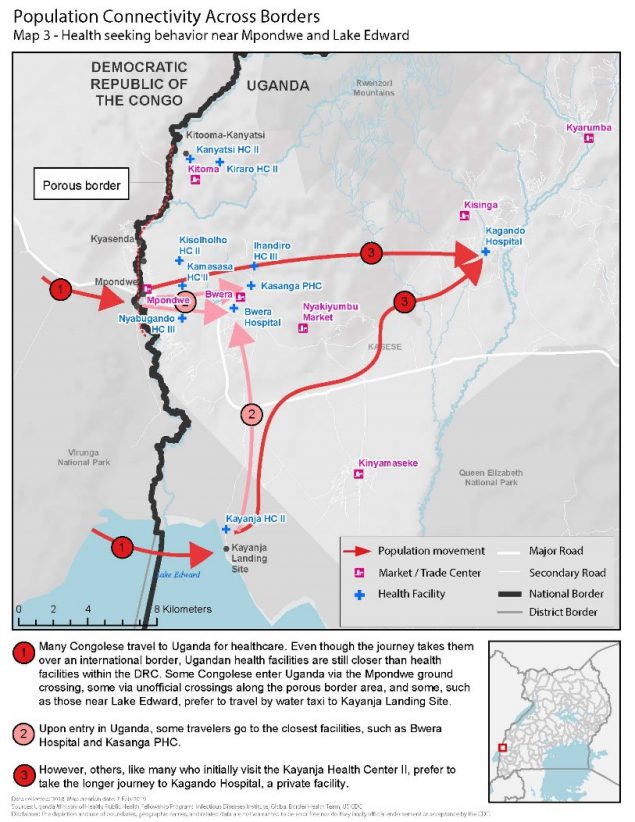
Ugandans knew they had to get ready for the worst when neighboring Democratic Republic of Congo (DRC) reported a new Ebola outbreak on August 1, 2018. Uganda shares more than 550 miles of border with DRC and sees thousands of people move between the two countries daily.
Understanding mobility patterns and connectivity between communities can inform preparedness and response efforts by identifying points of interest visited and routes traveled. Uganda’s Ministry of Health (MOH) activated the Public Health Emergency Operations Centre (PHEOC) and began preparedness activities. They wanted to be ready to rapidly detect, respond and stop further spread of Ebola if a case crossed the border. Since 2013, CDC-supported global health security investments and efforts in Uganda have dramatically helped the country reduce the time it takes to detect and respond to outbreaks. CDC has been supporting the MOH and its implementing partner, the Infectious Diseases Institute (IDI), to map routes traveled between DRC and Uganda, and points of interest within Uganda visited by Congolese, including health care facilities like Kagando Hospital.
Within the first week of the response, the MOH deployed a 14-person border health team to conduct point of entry assessments and characterize cross-border population movement in priority districts. The team used an adapted version of a CDC toolkit to hold community engagement activities to understand the behavior of Congolese seeking health care in Uganda. Results showed that Congolese would travel further into Uganda to reach Kagando Hospital rather than access closer government facilities. This information helped the District Task Force prioritized Kagando Hospital for evaluation and preparedness interventions. Similarly, local and national MOH level offices adjusted border health and surveillance preparedness initiatives to target the locations with the highest connectivity to the outbreak area in DRC. The MOH and IDI continue to map population movement along the shared borders with DRC and Rwanda. The results are used to inform preparedness interventions, including health care worker vaccinations, targeted community surveillance training, and strengthened infection and prevention control measures.
With support from CDC and other Global Health Security partners, Uganda is better prepared to respond to outbreaks at the source. This preparedness paid off when several travel-related Ebola cases were identified and quickly contained in Uganda in June 2019.
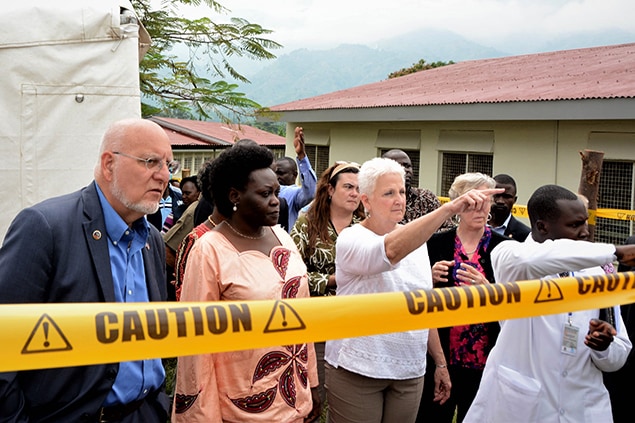
CDC Director Robert Redfield,the Minister of State for Health Sarah Opendi, and the US Ambassador to Uganda, Deborah Malac learn about Uganda Preparedness activities in 2018. Photo credit: Irene Nabusoba
On April 11, 2019, the Uganda MOH, CDC, and other partners held a nationwide Ebola outbreak simulation exercise. The three scenarios were: arrival of an ill traveler at Entebbe International Airport, detection of an ill person referred to Kagando Hospital in Kasese District, and identification of an ill traveler at a border crossing in Kasese. All three scenarios involved the PHEOC in the capital, Kampala.
Stopping Ebola requires early identification of cases, effective isolation of people ill with Ebola, and contact tracing of people exposed to Ebola patients so they can be vaccinated and isolated if they develop symptoms. The exercise evaluated the operational capabilities and identified strengths, weaknesses, and opportunities for improvement of Uganda’s emergency management systems at the border, in communities, health facilities, districts, and at the national level. Key capacities assessed included: Ebola alert management systems at key points of entry; isolation, transportation, and management of people with a suspected case of Ebola; laboratory sample collection, packaging, and dispatch; and initial management of people confirmed to have Ebola. The exercise also looked at community engagement in case of an Ebola event, knowledge and skills of village health teams, capacity of health facilities to handle cases, and general logistics and coordination at the district and national levels.
“Our aim with the simulation was to build full capabilities for full-fledged, real-time deployment and response. This made a world of a difference when Ebola crossed the border,” said CDC Uganda Division of Global Health Protection program director, Jaco Homsy.
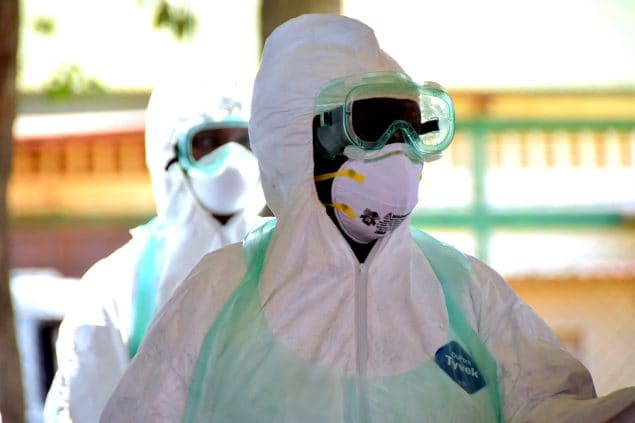
Responders wearing appropriate personal protective equipment during the simulation exercise. Photo credit: Irene Nabusoba
Two months after the simulation exercise, on June 11, 2019, the Uganda Minister of Health confirmed the first case of Ebola in the country—introduced by travelers from neighboring DRC. As it turned out, the simulation at Kagando Hospital in Kasese District helped medical staff quickly recognize Ebola symptoms in a patient who arrived at their hospital. A blood sample from the patient tested positive at a local laboratory. The MOH immediately formed a rapid response team that works with district health teams and local leaders to investigate and respond to other suspected Ebola cases. The team included 16 Field Epidemiology Training Program (FETP) fellows and alumni. FETP is a CDC-supported epidemiology-training program that provides epidemiologists with the skills to become true disease detectives. The team had an important role identifying a total of three Ebola confirmed cases in Uganda and tracking down more than 100 contacts of these cases.
For more than 10 years CDC has supported and collaborated with the Uganda Virus Research Institute’s (UVRI) viral hemorrhagic fever (VHF) laboratory. This established regional reference center for Ebola virus testing has tested, in real time, specimens from suspected Ebola cases and other VHF infections. Since the Ebola outbreak started in DRC, UVRI confirmed the three imported cases in Uganda. As of July 11, 2019 UVRI has tested almost 800 specimens suspected for Ebola, including close to 500 specimens from high-risk districts. In addition, healthcare and frontline workers have been vaccinated in 14 out of 30 high-risk districts, and this effort is ongoing.
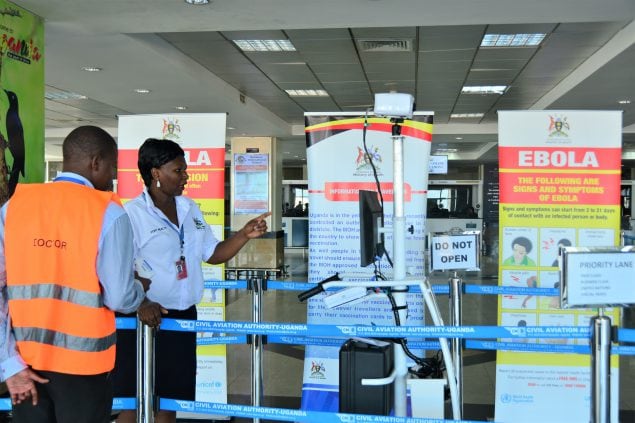
Port health staff looking at a “sick” person standing in line at the airport during the simulation exercise. Photo credit: Irene Nabusoba
Leocadia Kwagonza is a FETP graduate who now works for Uganda’s MOH leading the data management team for the current Ebola response. She has handled more than 10 previous outbreaks, but noted how Uganda’s preparedness and community efforts have made a difference.
“Many of the other outbreaks including some viral hemorrhagic fevers are difficult to identify at first, making it challenging to determine how to best respond. However, for this Ebola response, we had been prepared for a long time and the response structures are very well known even in the [Kasese] district. This was different because we were in anticipation mode,” said Kwagonza. “The community-led response in this current Ebola outbreak also made it easier especially in owning and taking up the interventions. There is always a community component, but this one has been awesome. There is a lot to learn from this experience not only for Uganda but for other countries as well.”
CDC, the Uganda government and other partners have collaborated to build global health security capacity for full-fledged, real time deployment and response. These efforts show how Uganda can put preparedness into action.
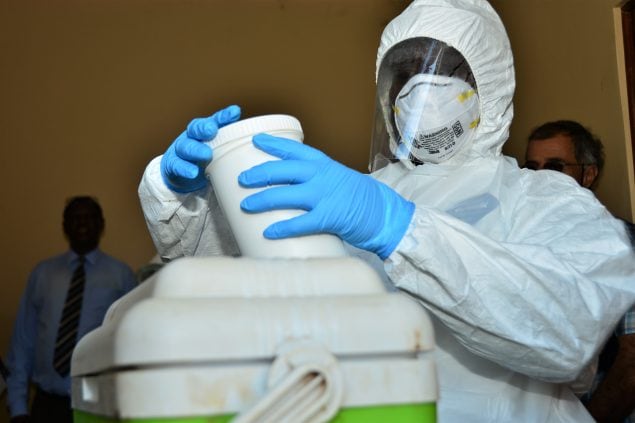
The simulation exercise tested Uganda’s capacity to safely transport samples of a dangerous pathogen. Photo credit: Irene Nabusoba
CDC: Preventing waterborne outbreaks in refugee camps
Monday, December 16th, 2019Hundreds of thousands of ethnic Rohingyas crossed the border into Cox’s Bazar, Bangladesh to escape violence in Rakhine State in Myanmar. More than 900,000 forcibly displaced Myanmar nationals live in refugee camps in Bangladesh. Because conditions are crowded and the area is prone to flooding, the risk of Acute Watery Diarrhea (AWD) and other waterborne disease outbreaks had to be reduced during the 2018 monsoon season. Humanitarian partners distributed household water treatment products throughout the camps and combined this with messages to promote good hygiene. However, a recent water, sanitation and hygiene (WASH) survey estimated that only 13% of households treat household water. Of the 182 households that reported to treat water using chlorine tablets, only 53 (21%) had detectable chlorine in their stored water, an indicator of whether water was treated and was protected from recontamination during storage in households. Bucket chlorination, where an attendant sitting by the well directly chlorinates each bucket of water as it is collected was also implemented, but only at a small number of wells. Because of low levels of household water treatment in the camps, the water, sanitation, and hygiene (WASH) team recommended to scale-up bucket chlorination to ensure households were using chlorinated water during the monsoon season.
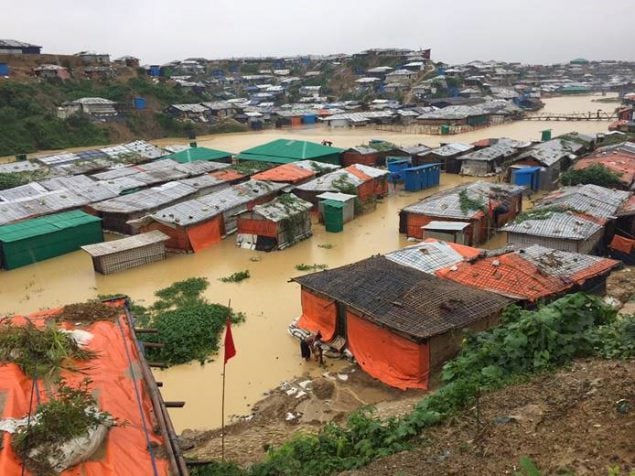
The WASH team within CDC’s Emergency Response and Recovery Branch (ERRB) worked with UNICEF and non-governmental partners to increase bucket chlorination from June to September 2018. In July, ERRB WASH specialists measured chlorine levels in one camp to provide a snapshot of current levels of chlorine in the water. After this, the WASH team started a program to monitor bucket chlorination, using mobile phone surveys to ensure chlorinators were present and that chlorine was in water in nearby households. In addition, they piloted guidelines to help identify which drinking water wells should receive bucket chlorination first. Finally, the WASH team provided guidance to implementing partners on how to scale-up and improve bucket chlorination based on assessment and monitoring results.
In addition, CDC supported the WASH Sector in Cox’s Bazar and UNICEF by training local staff on how to conduct water quality testing and drafting guidance on water quality monitoring, including a system to monitor E. coli levels in wells through the dry and monsoon seasons.
The Rohingya face extremely challenging circumstances as they seek refuge in makeshift camps. The 2019 UN World Water Day theme is “leaving no one behind” and CDC seeks to assist partners in providing safe, treated drinking water to the world’s most vulnerable communities.


